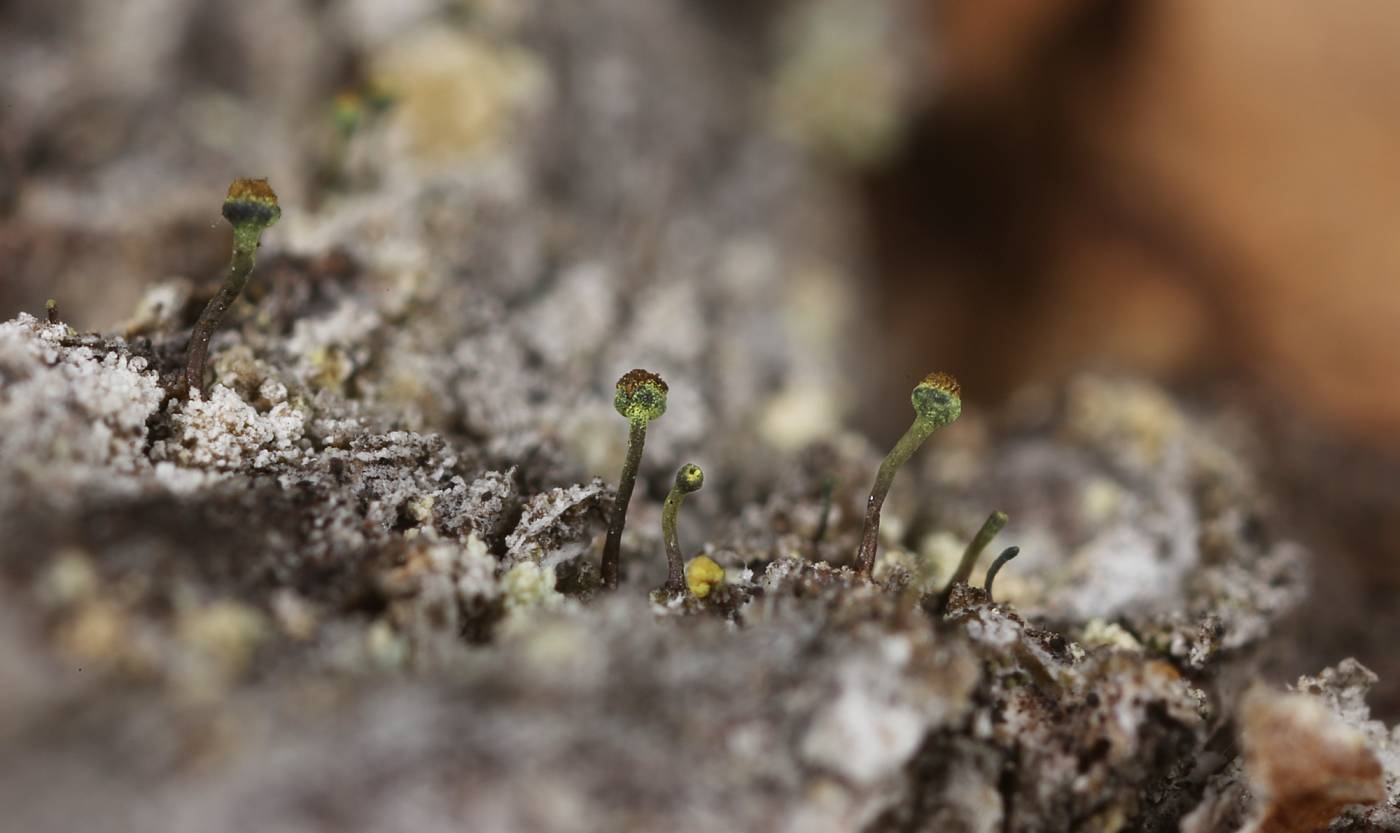Chaenotheca subroscida is characterised by a grey, slightly granulose thallus containing trebouxioid algae, yellow-green-pruinose fruiting bodies, and a relatively large, globular ascospores. The species grows on bark of conifers (especially spruces) in old-growth coniferous forests. It is a boreal-montane lichen, in Europe abundant only in the northern part of the continent. The species is rare in central Europe, linked to higher mountains. It was first described from the Polish side of the Krkonoše Mts. Later, Tibell (1973) reported its occurrence from a closely unspecified locality in Czechoslovakia. In fact, the report may refer to a finding in Slovakia. In 1885, the species was collected in Bučina in the Šumava Mts by P. Hora. This record is mentioned in the list of specimens supporting description of C. phaeocephala var. subhispidula by J. Nádvorník (Nádvorník 1942). Later, this name was recognised synonymous to C. subroscida (Tibell 1980).
Literature: Nádvorník J. (1942): Systematische Übersicht der mitteleuropäischen Arten der Flechtenfamilie Caliciaceae. – Studia botanica čechica 5: 6–46. Tibell L. (1973): Notes on Caliciales. I. Some species from Roumania. – Svensk Botanisk Tidskrift 67: 5–8. Tibell L. (1980): The lichen genus Chaenotheca in the Northern Hemisphere. – Symbolae Botanicae Upsalienses 23: 1–69.
taxonomic classification:Ascomycota → Lichinomycetes → Coniocybales → Coniocybaceae → Chaenotheca
Red List (Liška & Palice 2010):CR – critically endangered
Red List (Malíček 2023):C1 – critically endangered
Occurrence in the Czech Republic
All records: 1, confirmed 1. One click on a selected square displays particular record(s), including their source(s).
